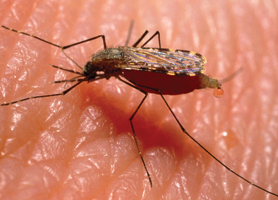In the sixteenth century, Jesuit missionaries returning from South America brought home a powder with the power to heal a deadly disease then rampant in Europe
No wonder the English memsahibs became so fond of a gin and tonic. In the days of empire, malaria was always a threat, even if your bed was surrounded by mosquito nets. So a dose of quinine – a staple of Indian tonic water – was essential as a deterrent. The quinine you find in drinks is chemically synthesised but its name suggests its source: the term comes from ghina, or quina-quina, a Peruvian name for a medicine coming from the bark of the cinchona tree. And Peruvian bark, better known as Jesuit’s bark, was once the most important remedy for all forms of malaria.That the Jesuits were crucial in discovering a
26 June 2014, The Tablet
Bark that cured the bite
Get Instant Access
Continue Reading
Register for free to read this article in full
Subscribe for unlimited access
From just £30 quarterly
Complete access to all Tablet website content including all premium content.
The full weekly edition in print and digital including our 179 years archive.
PDF version to view on iPad, iPhone or computer.
Already a subscriber? Login




